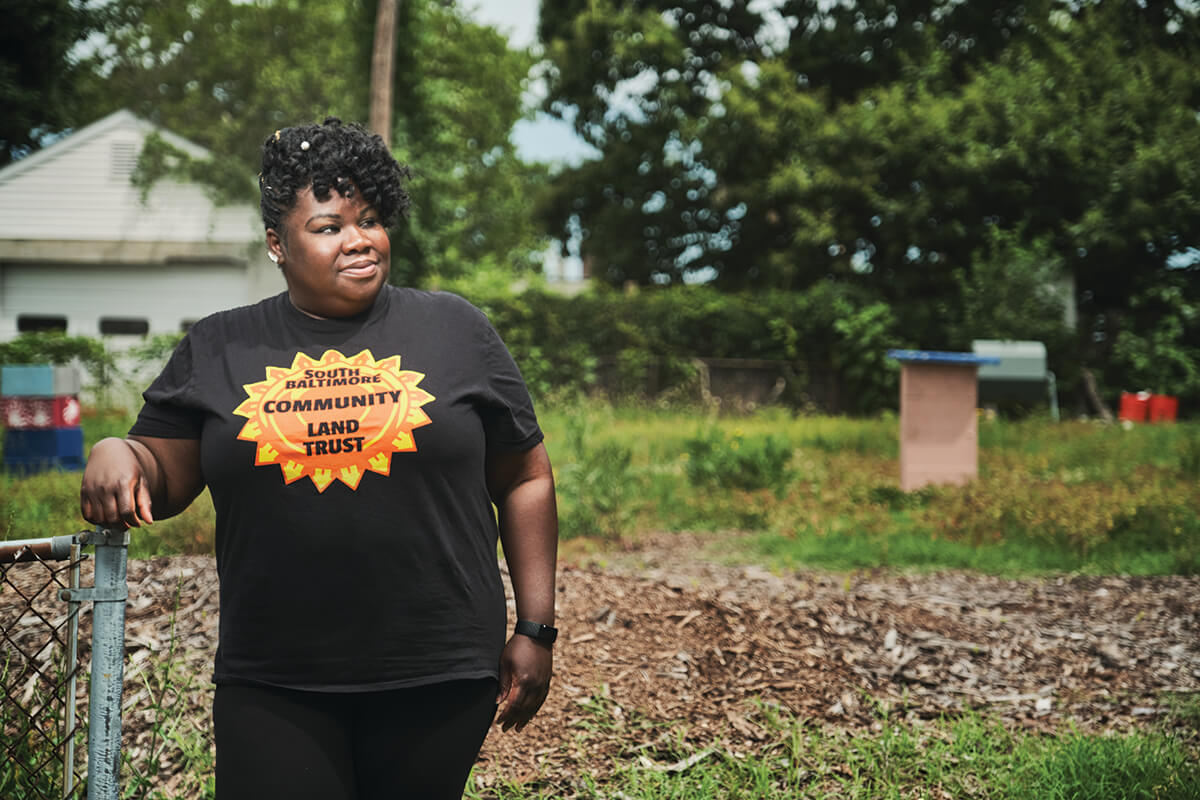GameChangers
Meleny Thomas Wants Environmental Justice for All
The founder of the South Baltimore Community Land Trust is dedicated to promoting environmental justice, permanently affordable housing development, and zero waste.

Meleny Thomas has always found herself in mentoring and leadership roles. Maybe it has something to do with growing up in the church, where she often taught Sunday school. In 2011, she was working with an after-school program at a local high school when the students learned an incinerator might be coming to the community. She helped them research the detrimental environmental effects it would have on the Curtis Bay neighborhood and, through their hard work, they were able to beat the proposed incinerator. Inspired, Thomas decided to create the South Baltimore Community Land Trust, a nonprofit organization dedicated to environmental justice, permanently affordable housing development, and zero waste.
What is the South Baltimore Community Land Trust (SBCLT)?
Through the outreach we did to defeat the proposed incinerator we learned of other communities that were displaced in the South Baltimore area because of industry. We learned that it’s not an accident and it isn’t something that happened overnight. This is something that has historically evolved in this community. We thought of the land trust model as a tool to be able to get ownership of land to help prevent further displacement of residents who want to stay in the community, and also a way to look at how we address environmental injustice and racism and the role that it plays in communities.
What is environmental racism and how does it play out in Baltimore neighborhoods?
When you think about the placement of environmental hazards—chemical companies, landfills, and companies that emit toxins into the air that harm human health—it’s historically neighborhoods like the 21225 ZIP Code in South Baltimore that have borne the burden of the polluting industry.
If you look at a map, there’s a concentration of chemical companies in this neighborhood versus affluent neighborhoods. What we’re hoping through the land trust model and being one of five community land trusts in Baltimore is to reclaim our community and also bring light to the environmental injustice and oppression that a lot of communities, especially communities of color, have endured.
When we’re talking about the environment, what are some of the biggest issues impacting minority communities in Baltimore today?
In Curtis Bay, there’s an open-air coal pile that’s right across from a recreational center. There are just different things that would not be allowed in an affluent community like Roland Park or the Inner Harbor. And when you compare communities, our ZIP Code should not determine or lessen our life expectancy. And unfortunately, with the overconcentration of chemicals, statistics and data say that the life span is shortened when you live in this community versus living in one like Roland Park, by 15 years. That is directly attributed to being in close proximity to pollutants.
The Chesapeake Bay Foundation published a study in 2017 where they investigated pollutants from the Wheelabrator incinerator that’s in Westport in South Baltimore and they said that pollution alone contributes to $55 million a year in health costs for people who have respiratory illness and need asthma treatment. That’s the first time that we’ve been able to put a number to it.
One of the big things that the SBCLT advocates for is affordable housing around Baltimore. What is the issue around affordable housing and how is SBCLT addressing it?
A lot of times what happens is developers come in or these investors come in and buy homes and then turn around and rent them at the max capacity to where it’s unaffordable. Through the land trust model, we are acquiring vacant homes and land in the community and redeveloping them using subsidized public grant dollars to build and reconstruct these homes and then sell them to income-qualified persons, persons who are earning 50 percent of the area median income and below.
It’s important to have mixed income communities because you have some people that are higher than 50 percent. But it’s also important to give people an opportunity to be able to own and own with dignity. Right now, we are developing 10 homes in the Curtis Bay neighborhood. We are also partnering with the Cherry Hill Development Corporation, and they are developing five homes in Cherry Hill, and we also have another additional five homes that we’ll be adding to the pipeline.
What does “development without displacement” mean?
Development without displacement really means that we want good development in our community. We want the people who have had to endure all the hardships, the blight, and injustices to be able to embrace and experience that. So people who have lived in the community who may have been renting for 10, 15 years and never thought they would get an opportunity for homeownership. If they’re ready, we want to make sure that those lifetime residents are able to experience and enjoy the beauty of the development that is taking place